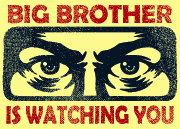How To Increase Sales Velocity By Using A ‘Customer First’ Strategy With Your CRM

CRMs—or Customer Relationship Management systems—are ubiquitous in the sales market. Customers, after all, are the foundation of any sale. It’s vital, for both you and your sales team, that you Manage your Customer Relationships. The CRM was invented for that very purpose—to help us manage our customer relationships.
But all too often CRMs start with one function and end up getting repurposed for others. A tool can be used for more than just its original purpose, but sometimes you have to step back and realize you’re hammering screws into concrete.
Let’s take a look at what a CRM intends to do and how you can better leverage yours. First: let’s put the C back in CRM. Let’s put the customer first.
The Misconception
A lot of sales managers might see the information that a CRM gathers and think one thing: this is a great way to keep tabs on my sales reps and make sure they’re working. And, sure, it can do that. But that’s not what it’s built for.
When you use your CRM like it’s a Big Brother tool—ensuring your team is keeping up with quotas—you overlook its capability to help representatives build relationships with customers. According to Finances Online, customers are likely to spend between 20%-40% more when they engage with a company using a CRM, but that means it needs to be used to actually build relationships.

You might be losing out on that gain if you’re leaning on your CRM to just keep track of sales reps. Instead, you need to keep track of your customers.
The Reality
When you boil down a CRM’s usefulness to its numbers, you reduce your sales team to sales robots. The substance of their customer interactions no longer matters—only whether or not they make the sale.
Instead, if you were to use your CRM correctly, you could be gleaning a TON of useful information on your customers. This information could lead to higher sales, and may include:
- Customer preferences
- Personal ambitions
- Previous purchases
- Opinions on the competition
- Future buying plans
You’re missing out on all this customer information if you’re wasting time and effort only using your CRM to keep tabs on your sales team. Rather than helping them build deeper relationships with customers, you’re creating an environment where your reps end up hating your CRM.
“I use Telenotes to help me remember details about the customer—their personality, their personal life, their buying style, really anything that helps me deepen my relationship with them.”
– Travis I
The Solution
Whatever CRM you end up using, you need to use it to monitor customer data, customer behavior, and customer desires. Your sales rep isn’t some widget to monitor—they’re a driven team member who needs a good way to keep track of all the customers they meet.
If you leverage your CRM to do this, you won’t intimidate and frustrate your sales reps, you’ll inspire them to do better.
One way to help your sales reps keep the focus on the customer is to reduce their busy work. A great way to reduce that busy work is by pivoting their note-taking process from typing to talking (but not with voice-to-text notes… no one has time to try to fix all those errors).
The C in CRM does NOT stand for “Constraints on your Reps” or “Calculated Tracking of Sales Stats”—it stands for “Customer.” If you’re not using your CRM to help your sales reps build a relationship with their customers, you’re not using it right.
Tune in next time where we’ll be diving into what the “R” in CRM really means. And if you’re interested in seeing how talking beats typing, reach out and let us show you what Telenotes can do for your team in a free demo.







